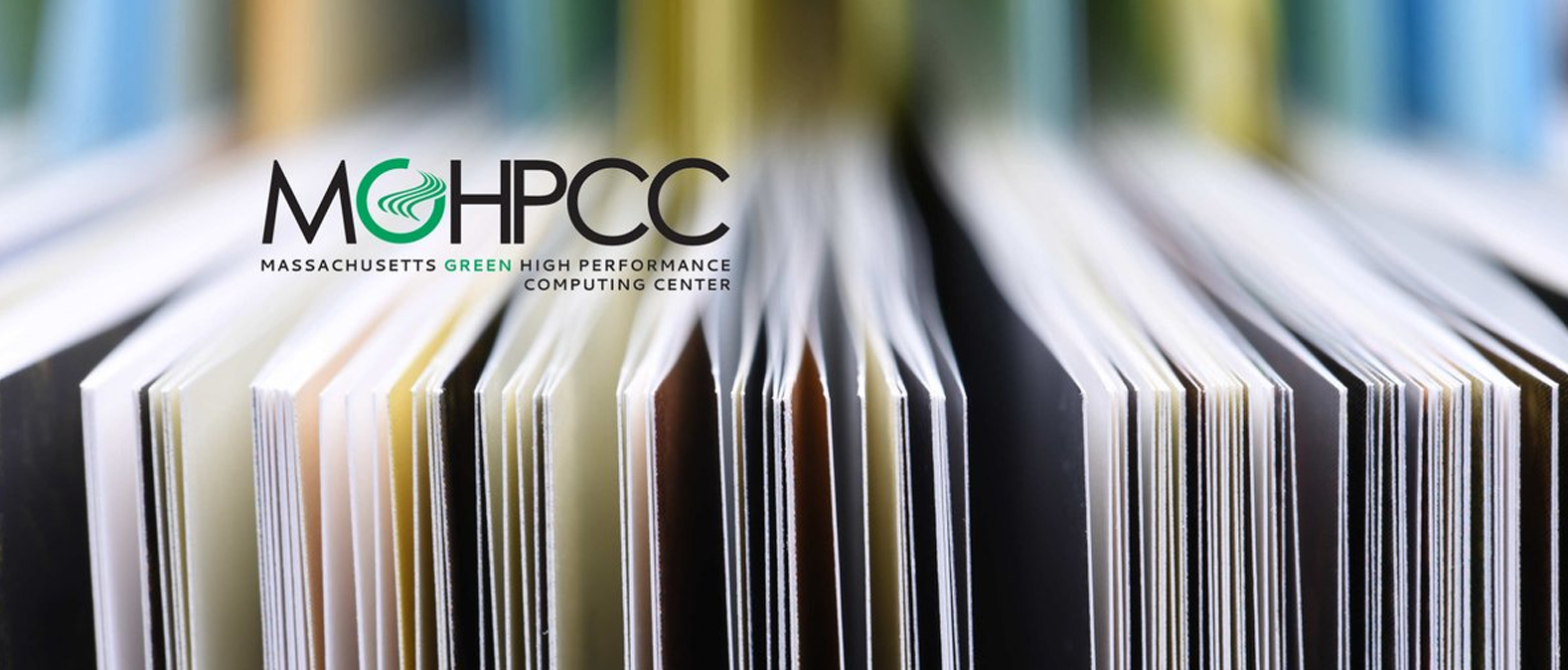
Parallel Python Programming? Bimetallic Catalysts? Chiral N-Tethered 1,7-Enynes? This month's selection of publications featuring research using the MGHPCC.
Angus Beane et al (2022), Stellar Bars in Isolated Gas-Rich Spiral Galaxies Do Not Slow Down, arXiv: 2209.03364 [astro-ph.GA]
Ligia R. Benavides, Gregory D. Edgecombe, Gonzalo Giribet (2022), Re-evaluating and dating myriapod diversification with phylotranscriptomics under a regime of dense taxon sampling, Molecular Phylogenetics and Evolution, doi: 10.1016/j.ympev.2022.107621
Chansup Byun et al (2022), pPython for Parallel Python Programming, arXiv: 2208.14908
Helena Calatrava et al (2022), Cooperative Positioning using Massive Differentiation of GNSS Pseudorange Measurements, Masters Dissertation, Universitat Politècnica de Catalunya
Chan, P.W., Catto, J.L. & Collins, M. (2022), Heatwave–blocking relation change likely dominates over decrease in blocking frequency under global warming, npj Clim Atmos Sci, doi: 10.1038/s41612-022-00290-2
Chi-Ming Chang and Ying-Hsuan Lin (2022), Words to describe a black hole, arXiv: 2209.06728 [hep-th]
Zhou Chen (2022), Surface Science Study of Bimetallic Catalysts and Confined Chemistry with 2-Dimensional Model System, Doctoral Dissertation Stony Brook University, ProQuest
Yu Cheng et al (2022), Logarithmic profiles of velocity in stably stratified atmospheric boundary layers, arXiv: 2209.07008 [physics.flu-dyn]
Jorge Escorihuela and Lawrence M. Wolf (2022), Computational Study on the Co-Mediated Intramolecular Pauson–Khand Reaction of Fluorinated and Chiral N-Tethered 1,7-Enynes, Organometallics, doi: 10.1021/acs.organomet.2c00227
Dirk Ifenthaler et al (2022), Investigating students' use of self-assessments in higher education using learning analytics, Journal of Computer Assisted Learning, doi: 10.1111/jcal.12744
Hongyu Li et al (2022), StereoVoxelNet: Real-Time Obstacle Detection Based on Occupancy Voxels from a Stereo Camera Using Deep Neural Networks, arXiv: 2209.08459 [cs.RO] https://arxiv.org/pdf/2209.08459.pdf
Deng Li, Mona S. Minkara (2022), Elucidating the enhanced binding affinity of a double mutant SP-D with trimannose on the influenza A virus using molecular dynamics, Science Direct, doi: 10.1016/j.csbj.2022.08.045
Sen-Hui Liu et al (2022), A review and progress of multiphase flows in atmospheric and low pressure plasma spray advanced coating, Science Direct, doi: 10.1016/j.mtphys.2022.100832
Menkir, T.F., and Donnelly, C.A. (2022), The impact of repeated rapid test strategies on the effectiveness of at-home antiviral treatments for SARS-CoV-2, Nat Commun, doi: 10.1038/s41467-022-32640-2
Prajwal Niraula et al (2022), The Impending Opacity Challenge in Exoplanet Atmospheric Characterization, arXiv: 2209.07464 [astro-ph.EP]
Alexander E. Siemenn et al (2022), Fast Bayesian Optimization of Needle-in-a-Haystack Problems using Zooming Memory -based Initialization, arXiv: 2208.13771 [cs.LG]
Hao Tang et al (2022), Communication-efficient Quantum Algorithm for Distributed Machine Learning, arXiv:2209.04888 [quant-ph]
Jonathan Vandermause et al (2022), Active learning of reactive Bayesian force fields applied to heterogeneous catalysis dynamics of H/Pt, Nature Communications, doi: 10.1038/s41467-022-32294-0
Matthew L. Weiss et al (2022), An Evaluation of Low Overhead Time Series Preprocessing Techniques for Downstream Machine Learning, arXiv: 2209.05300 [cs.LG]
Jack Wisdom et al (2022), Loss of a satellite could explain Saturn’s obliquity and young rings, Science, doi: 10.1126/science.abn1234
Yuanhao Wu et al (2022), N-DISE: NDN-based data distribution for large-scale data-intensive science, ICN '22: Proceedings of the 9th ACM Conference on Information-Centric Networking, doi: 10.1145/3517212.3558087
Shu Zhao et al (2022), Genomic and Molecular Identification of Genes Contributing to the Caspofungin Paradoxical Effect in Aspergillus fumigatus, Microbiology Spectrum, doi: 10.1128/spectrum.00519-22
Yuanchao Zheng et al (2022), An evaluation of the genome-wide false positive rates of common methods for identifying differentially methylated regions using illumina methylation arrays, Epigenetics, doi: 10.1080/15592294.2022.2115600
Zikai Xiong and Robert M. Freund (2022), Using Taylor-approximated Gradients to Improve the Frank-Wolfe Method for Empirical Risk Minimization, arXiv: 2208.13933 [cs.LG]
Yujia Xue et al (2022), Deep-learning-augmented computational miniature mesoscope, Optica, doi: 10.1364/OPTICA.464700
Ziyan Zhu, Stephen Carr, Qiong Ma, and Efthimios Kaxiras (2022), Electric field-tunable layer polarization in graphene/boron nitride twisted quadrilayer superlattices, arXiv: 2209.10636 [cond-mat.mes-hall]
Do you have news about research using computing resources at the MGHPCC? If you have an interesting project that you want to tell people about or a paper you would like listed, contact